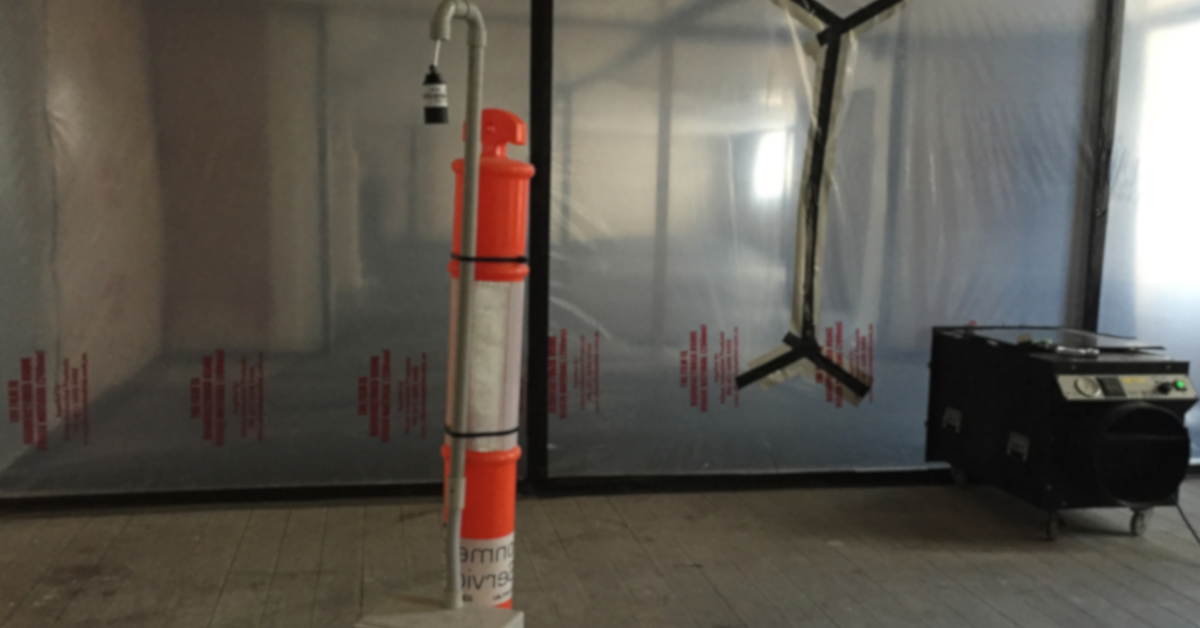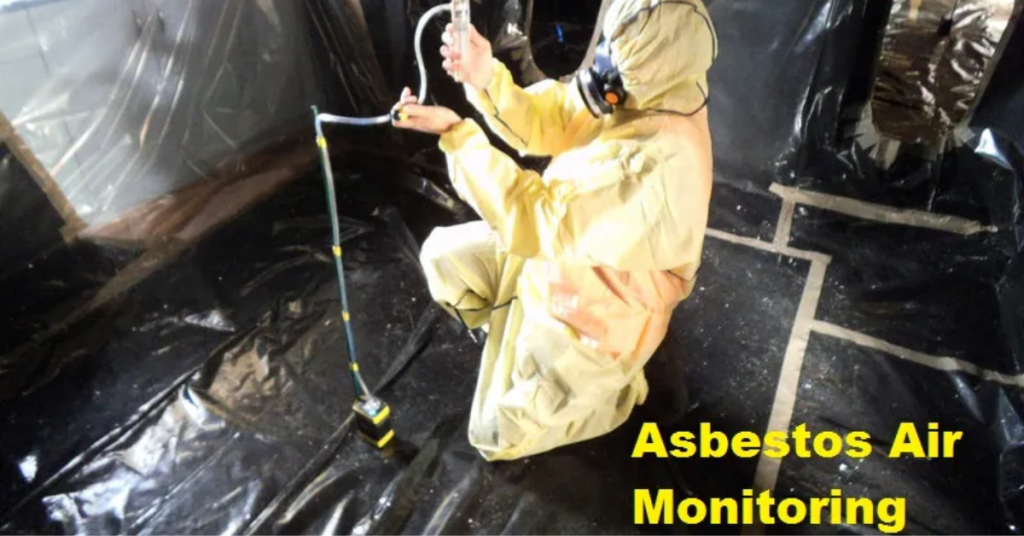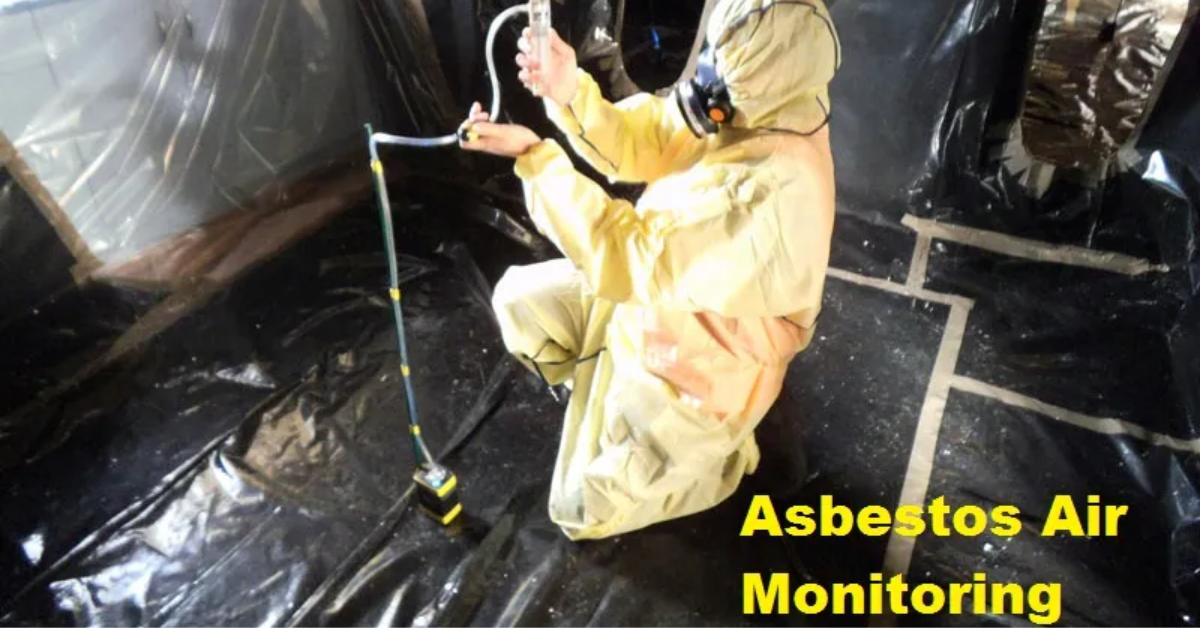Asbestos air monitoring is required when asbestos is being removed, disturbed, or suspected in a building. It checks the air for dangerous asbestos fibers, making sure it’s safe to breathe. In Australia, strict laws protect people from asbestos exposure, and air monitoring is a key part of asbestos safety.
Over 4,000 Australians die each year from asbestos-related diseases like asbestosis and mesothelioma. Even one asbestos fiber can be dangerous if inhaled. That’s why Safe Work Australia and local laws require asbestos air testing in high-risk areas, such as during renovations, demolitions, and asbestos removal work.
Studies show that 70% of homes in Australia built before 1990 contain asbestos. Many workplaces and public buildings also have it. If asbestos is disturbed, it can stay in the air for hours or even days, increasing health risks.
At Crown Asbestos Removal, we provide certified asbestos removal and air monitoring services in Canberra and NSW. Our licensed professionals follow strict safety standards to keep you and your family safe.
On this page, we’ll learn everything about asbestos air monitoring, when it’s needed, and why it’s important for your safety.
What Is Asbestos Air Monitoring?
Asbestos air monitoring checks the air for tiny asbestos fibers that can be harmful if inhaled. These fibers are too small to see but can cause serious lung diseases like asbestosis, lung cancer, and mesothelioma.
Studies show that asbestos-related diseases kill around 4,000 Australians every year, which is more than the national road toll. Because of these risks, the government enforces strict asbestos safety laws to protect people from exposure.
Licensed professionals use special pumps to collect air samples, which are then tested in a NATA-accredited lab to check asbestos levels. If fiber levels are too high, immediate action is needed to remove the contamination.
In Australia, asbestos was banned in 2003, but one in three homes still contains asbestos, making asbestos air monitoring essential whenever asbestos is disturbed, removed, or suspected in a building.
When Is Asbestos Air Monitoring Required?

In some situations, asbestos air monitoring is legally required to protect people from exposure. Here are the key scenarios where monitoring is necessary:
During Asbestos Removal
If friable asbestos (soft, easily crumbled) is being removed, asbestos air monitoring is mandatory by law. This type of asbestos is extremely dangerous because it can easily become airborne.
Even non-friable asbestos, found in materials like cement sheets, vinyl tiles, and insulation, can become hazardous if it is damaged, drilled, sanded, or broken. If this happens, air monitoring is needed to check for contamination.
According to Safe Work Australia, asbestos exposure must be kept below 0.01 fibers per milliliter of air to be considered safe. Anything above this level requires immediate action to reduce exposure.
After Removal (Clearance Testing)
Once asbestos removal is done, clearance air monitoring checks if the air is safe for people to return. If asbestos fiber levels are still high, additional cleaning is required.
In Australia, a clearance certificate is legally required for all friable asbestos removal. A licensed asbestos assessor must inspect the area, take air samples, and confirm that asbestos levels are within the legal safety limit.
Renovations & Demolitions
If your home or building was built before 1990, there’s a high chance it contains asbestos-containing materials (ACMs). When these materials are disturbed during renovations or demolitions, asbestos fibers can be released into the air.
A recent study found that 70% of commercial buildings in Australia built before 1990 contain asbestos. If you’re planning construction work, asbestos air monitoring is essential to prevent exposure and ensure compliance with safety regulations.
Workplace Safety Compliance
If your workplace deals with asbestos materials, regular asbestos air monitoring is required by law. Industries like construction, mining, shipbuilding, and manufacturing have a high risk of asbestos exposure, making air monitoring critical for worker safety.
In Australia, failing to follow asbestos safety laws can result in heavy fines and legal consequences. WorkSafe guidelines state that businesses must keep asbestos exposure as low as possible, with a strict limit of 0.01 fibers per milliliter of air.
According to Safe Work Australia, workers who regularly inhale asbestos fibers have a 6 times higher risk of developing lung cancer than those who don’t. This is why air monitoring is a legal requirement in high-risk workplaces.
Types of Asbestos Air Monitoring
In Australia, strict regulations ensure asbestos is handled safely. Asbestos air monitoring is required helps check the air for harmful fibers that can cause diseases like asbestosis, lung cancer, and mesothelioma. Let’s break down the four main types of asbestos air monitoring and when they are required.
Background Monitoring
Background air monitoring happens before any work starts. The goal is to measure the current air quality and check if asbestos fibers are already in the air. If asbestos levels are high before work begins, special safety measures may be needed.
Why is Background Monitoring Important?
Studies show that the safe limit for airborne asbestos in Australia is 0.01 fibers per milliliter (f/mL). If the air already has asbestos fibers above this level, the risk of exposure is high. In such cases, work cannot begin without proper control measures.
| Background Air Monitoring Results | Risk Level |
| Less than 0.01 f/mL | Safe to proceed |
| 0.01 – 0.02 f/mL | Caution: Minor asbestos presence |
| Above 0.02 f/mL | High risk: Extra safety measures needed |
Exposure Monitoring
Exposure air monitoring is done while workers are handling asbestos. The goal is to measure how much airborne asbestos they breathe in and ensure they stay within safe exposure limits.
How Much Asbestos Exposure is Dangerous?
- In Australia, the legal workplace exposure limit for asbestos is 0.1 fibers per milliliter (f/mL) over eight hours.
- Studies show that workers exposed to 0.5 f/mL or higher for long periods are at a 5 times higher risk of developing mesothelioma.
If the exposure level crosses 0.1 f/mL, work must stop immediately, and better safety measures must be applied.
| Exposure Level (f/mL) | Health Risk |
| 0.01 – 0.1 | Low, but monitoring is required |
| 0.1 – 0.5 | Moderate risk safety measures must be improved |
| Above 0.5 | High-risk work must stop immediately |
Control Monitoring
Control air monitoring happens during asbestos removal. The goal is to check if asbestos fibers are escaping into the surrounding air. This is especially important when removing friable asbestos, which can easily turn into dust.
Why is Control Monitoring Important?
- Up to 90% of asbestos-related diseases come from breathing in fibers during removal or demolition work.
- If asbestos spreads into nearby areas, it can put workers, residents, and the environment at risk.
If control monitoring detects asbestos fibers above 0.01 f/mL, work must stop, and stronger containment methods must be used.
| Control Air Monitoring Results | Action Required |
| Less than 0.01 f/mL | Safe to continue work |
| 0.01 – 0.02 f/mL | Extra safety controls needed |
| Above 0.02 f/mL | High risk: Work must stop |
Clearance Monitoring
Clearance air monitoring is the final check after asbestos removal. A certified professional tests the air to ensure it’s safe to re-enter. If the air passes the test, an Asbestos Clearance Certificate is issued.
When is Clearance Monitoring Required?
- By law in Australia, clearance monitoring is required when removing friable asbestos (loose, crumbling asbestos).
- If asbestos removal happens in homes, offices, or public spaces, clearance monitoring ensures the area is safe for people to return.
How is Clearance Monitoring Done?
- Air samples are taken for at least four hours.
- The air must have less than 0.01 f/mL of asbestos to pass.
- If the test fails, more cleaning and retesting are needed.
| Clearance Test Results | Outcome |
| Less than 0.01 f/mL | Safe for re-entry |
| 0.01 – 0.02 f/mL | Extra cleaning required |
| Above 0.02 f/mL | High risk: Worksite remains restricted |
Why Is Asbestos Air Monitoring Important in Australia?
Asbestos is a dangerous material that, if disturbed, can release harmful fibers into the air. These fibers can be inhaled and cause serious health problems. That’s why asbestos air monitoring is so important. Here’s why you need to pay attention:
1. Prevents Long-Term Health Risks
Inhaling asbestos fibers can cause severe diseases, some of which may not show symptoms for many years. The most common diseases caused by asbestos exposure include:
- Asbestosis: A lung disease caused by scarring of lung tissue from inhaling asbestos fibers.
- Mesothelioma: A rare but aggressive cancer often linked to asbestos exposure.
- Statistics: In Australia, about 700 people are diagnosed with mesothelioma each year, and it remains one of the leading causes of work-related deaths. (Source: Australian Mesothelioma Registry).
- Lung Cancer: People exposed to asbestos are also at a higher risk of developing lung cancer.
By conducting asbestos air monitoring, you can prevent these diseases by making sure no dangerous fibers are present in the air where people work or live.
2. Ensures Compliance with Australia’s Strict Asbestos Safety Laws
Australia has some of the strictest asbestos safety regulations in the world. The Safe Work Australia guidelines and the Work Health and Safety (WHS) Act require businesses to ensure the safety of their workers and the general public when dealing with asbestos.
- Under these laws, businesses must conduct air monitoring during and after asbestos removal to ensure that the area is safe.
- Non-compliance can lead to heavy fines, legal consequences, and potential harm to individuals.
- Statistics: In 2020, the Fair Work Commission reported over 100 workplace incidents involving asbestos exposure due to non-compliance, leading to fines and compensation payouts.
Monitoring the air helps businesses stay on the right side of the law while protecting people’s health.
3. Protects Families, Workers, and the Environment
Whether you’re renovating your home, working in a high-risk job, or handling asbestos materials, air monitoring helps protect everyone from harmful exposure. Here’s how:
- For Families: If you have asbestos in your home, air monitoring helps ensure you and your loved ones aren’t at risk of exposure, especially when performing renovations.
- For Workers: In high-risk workplaces like construction sites, ensuring that air quality is safe is essential to avoid workplace-related diseases.
- For the Environment: Asbestos fibers can travel long distances. Proper air monitoring ensures these fibers don’t escape into the environment, keeping your community safe.
- Statistics: Research by Safe Work Australia shows that approximately 250,000 workers are exposed to asbestos during their jobs each year. Asbestos air monitoring is vital in protecting these workers.
By using air monitoring, you can make sure that harmful fibers are kept under control, providing safety for everyone.
Who Can Conduct Asbestos Air Monitoring?
Only licensed professionals are authorized to conduct asbestos air monitoring. This is important because handling asbestos requires specialized knowledge and equipment. Here’s why you should only trust certified experts:
1. Only Licensed Professionals
In Australia, strict regulations state that only licensed individuals can carry out asbestos air testing. These professionals have the proper training to handle asbestos safely and ensure accurate testing.
- Regulation: According to Safe Work Australia, anyone working with asbestos must have the correct training and certification under the Work Health and Safety (WHS) Regulation.
- Specialized Training: These experts are trained in using equipment like air pumps and filters to measure asbestos concentrations. Without the right expertise, you risk inaccurate results and potential exposure to asbestos.
2. Certified Asbestos Removal Experts
Hiring certified asbestos removal professionals ensures that you follow the correct procedures for asbestos removal and air testing. These experts are not only licensed to remove asbestos but also to conduct air monitoring during and after the removal process.
- Why this matters: The safety of workers and the general public depends on getting accurate air test results. If done incorrectly, it could result in further exposure to asbestos fibers.
- Certifications: In Australia, certified asbestos removalists must meet industry standards such as those outlined by the Asbestos Removal Contractors Association (ARCA).
When you hire certified experts for asbestos air monitoring, you’re ensuring compliance with Australian regulations and, more importantly, protecting everyone’s health.
Final thoughts
In Australia, asbestos air monitoring is crucial to ensuring the safety of your environment. Whether you’re managing a renovation project, handling asbestos removal, or maintaining workplace safety, knowing when and why to conduct air testing is essential. It helps prevent long-term health risks like asbestosis and mesothelioma, ensures compliance with Australian safety laws, and protects families, workers, and the environment from asbestos exposure.
At Crown Asbestos Removal, we specialize in providing certified, safe, and efficient asbestos air monitoring services. Our team of licensed experts is here to ensure your property remains asbestos-free, following all the necessary regulations. With years of experience and a commitment to top-notch service, we protect you and your loved ones at all times.
Are you ready to ensure your environment is safe and compliant with the latest asbestos regulations? Reach out to Crown Asbestos Removal, Australia, today, and let us handle the testing and removal process for you!
How are you managing asbestos air monitoring in your current project? Don’t take any chances-contact us to ensure peace of mind and a safe, healthy environment!

